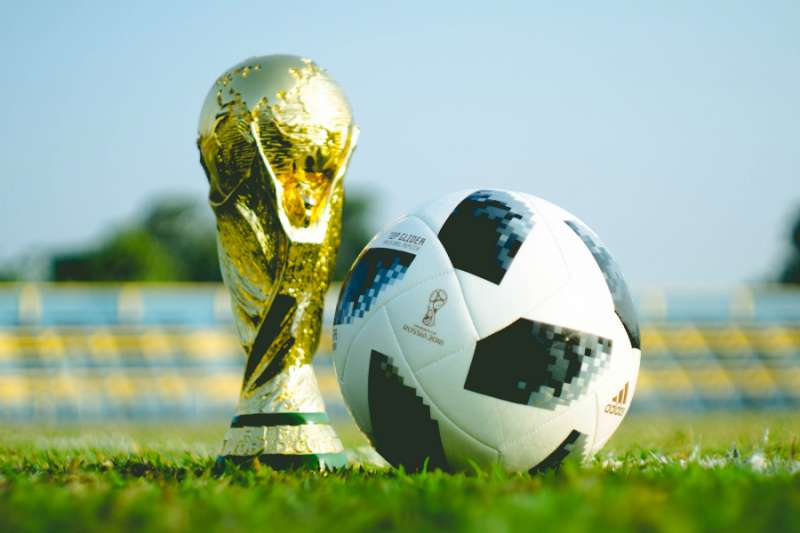On Sunday, France and Croatia will square off on the soccer pitch for the 2018 FIFA World Cup Championship. While most U.S. Catholics are only casual soccer fans, many will join more than 3 billion people around the world who are expected to watch the game.
What team will U.S. Catholics root for as two historically Catholic countries face off?
If you’re still undecided, perhaps a comparison of the Catholic life, history, and culture of France and Croatia would be helpful:
Catholic roots
Croatia:
During the time Jesus lived in Palestine, Croatia, along with the rest of the Balkan Peninsula, was a part of the Roman Empire- most of it a part of the Roman province of Dalmatia.
Located along the Adriatic Sea, Dalmatia, which was also sometimes referred to as Illyricum, an older Greek name, was home to Roman subjects and their religions from across the Empire. At the time Jesus lived, there was a Jewish population in the region. Some members of the Jewish community became Christians during the earliest periods of Christian evangelization.
Scripture records that Titus, a disciple of St. Paul, travelled to Dalmatia, and he might have died there. The region is mentioned in St. Paul’s Second Letter to Timothy.
Some old traditions hold that St. Paul might have gone to Dalmatia too, since he wrote in the Letter to the Romans about visiting “Illyricum,” but he was more likely referring to a part of Greece close to modern-day Albania.
The Croatian people, who migrated to the Dalmatian region in the 6th century, probably followed tribal religions until natives to the region, along with Byzantine and Benedictine missionaries, some from France, converted them to Catholicism. By the 9th century, Croats could be considered a Christian people, and, by the end of that century, Croatian nobility had begun pledging their allegiance to the pope.
France:
France is often referred to as the “eldest daughter of the Church,” because of the long and faithful history of the Catholic Church there.
There are many early legends that connect France and New Testament figures. One such legend says that Lazarus, Mary, and Martha were exiled from Israel and travelled by boat to France’s Mediterranean coast. Still another says that Lazarus was the first bishop of Marseille, and that he is buried in Burgundy. Some such legends say that Mary Magdalene is the sister of Lazarus and she made the trip, and then lived for 40 years in a cave in Provence -- France’s famous madeleine cookies are sometimes said to be named for Mary Magdalene.
The earliest non-legendary record of the Church in France begins in the 2nd century, when 48 Catholics, included the Bishop of Lugdunum, were martyred in Lyon, which was then part of the Roman province of Gaul.
Most French people consider King Clovis I to be the founder of France. Clovis converted from paganism, and was baptized on Christmas Day in 496 by Saint Remy. Clovis’ baptism is considered to be the foundational moment of western Christendom.
The point:
Croatia is mentioned in the Bible. While France is the Church’s eldest daughter, any place mentioned in Scripture has a strong claim on ancient Christian roots. This point goes to Croatia.
Saints
Croatia:
Croatia’s patron saint is St. Joseph. You can’t do much better than that. Unless your patron saint is the Blessed Virgin Mary. France’s patron saint is the Blessed Virgin Mary, in addition to several other saints.
St. Jerome was born in the region of Dalmatia. So was St. Marko Krizin, a priest of the Counter-reformation, and St Leopold Mandic, a pious Capuchin missionary. St. Nicholas Tavelic was a Croatian Franciscan, who was martyred in 1391 in Jerusalem after refusing to convert to Islam, along with 3 Franciscan companions.
In 2003, Pope St. John Paul II dedicated a church to the Croatian martyrs, soldiers who were slaughtered by invading Ottoman forces in the 15th century. Hundreds of thousands of other Croats have faced martyrdom and persecution, and died holy deaths in discipleship of Jesus Christ.
France:
St. Joan of Arc. St. John Vianney. St. Therese of Lisieux. St. Remy. St. Denis. St. Peter Faber. St. Isaac Jogues. St. Louis IX of France. St. Vincent de Paul. I’m really just getting warmed up. This category is going to France.
The point:
In its long history, Croatia has presumably given the Church many holy men and women, but many of them remain unknown. Over the centuries, the holy people of central European countries have not gained as much attention as those from western Europe. This is unfortunate. But France has a lot of saints. A lot. France gets the point.
Cathedrals
Croatia:
The Cathedral of the Assumption of the Blessed Virgin Mary is stunning. Beautiful. A gothic-style cathedral built in the 1200s, and restored in the 1880s. There are barricades around the cathedral that were built in the 1400s to hold back Ottoman invaders. Those same barricades held back the Ottomans in another invasion attempt 200 years later. Zagreb’s cathedral has also survived an earthquake. It’s a gem for the entire Church.
France:
The cathedral at Chartres is considered to be the highpoint of Gothic art and architecture. Its stained glass is world famous. It has been imitated around the world. Built in the late twelfth century, it has been restored several times. During World War II, an American colonel snuck behind German lines to ensure it was not being occupied by the Germans. His heroism ensured that the building was not bombed by the Allies.
The point:
Chartres is famous. Zagreb’s cathedral should be more famous. One is considered the high-point of European architecture. The other held back hordes of Ottoman invaders. People hate that soccer has ties, but this is a soccer story, and this category is a tie.
The Score: Croatia 1, France 1.
So what team will Catholics root for? The Church’s "eldest daughter," or the team whose coach loves the rosary?
Game on.

